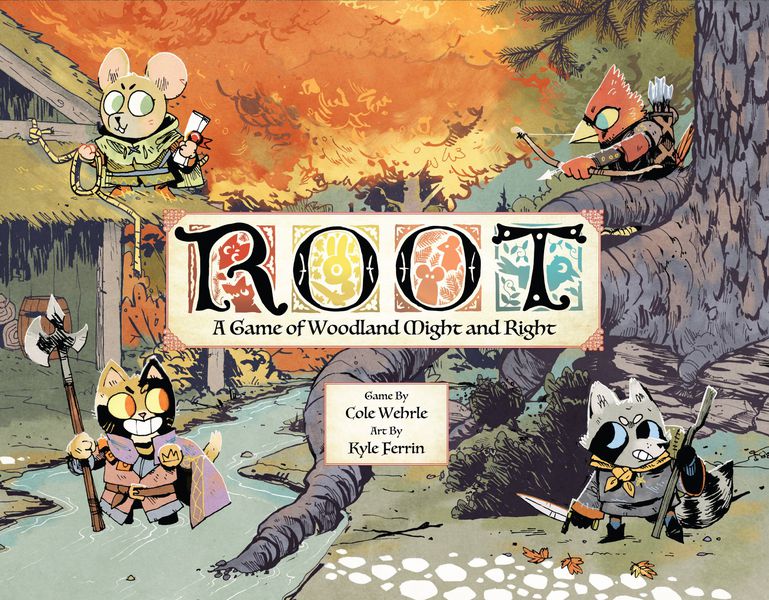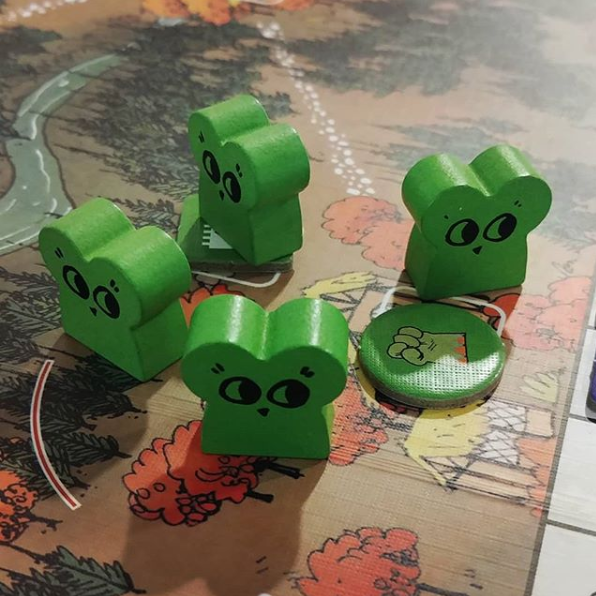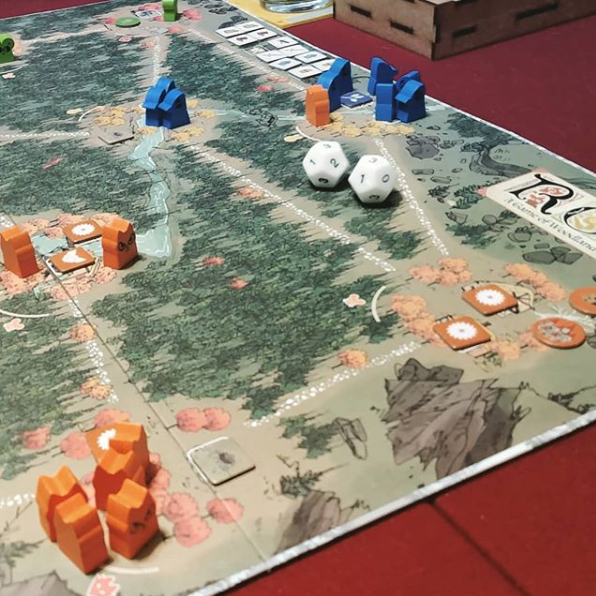
Despite quite enjoying my first game of Root: A Game of Woodland Might and Right, I found myself scratching my head as the game session drew to a close. The marauding Marquise de Cat had, to put it bluntly, utterly annihilated the other three factions, winning by a comfortable margin of ten points. My imperial bird armies had performed admirably in the face of this feline onslaught, despite grappling with their fair share of internal turmoil, but crumpled under the might of the Marquise’s war machine. However, losing the match wasn’t what perplexed me (that sort of thing happens to me all of the time). I just had very little understanding of why I had lost, or even the steps my opponent had taken to orchestrate such a convincing victory.
An Overview of Root
Root is a game in which players pit factions of murderous, yet adorable, woodland creatures against one another, battling for control of a vast forest. Although the core combat system is quite simple — roll two dice, the attacker claims the higher number, and the defender suffers losses equaling the difference — the gameplay is complicated by the incredibly varied abilities of each faction. All players share the same victory condition of reaching 30 points, but the ways they can earn points is determined by which anthropomorphized animal collective they choose at the beginning of the game. Each faction has a custom player board that dictates which actions they can take on their turn, divided into three phases: Birdsong, Daylight, and Evening.

The nefarious Marquise de Cat begins the game as the established power, boasting almost complete control of the forest. Their gameplay style mimics that of a Eurogame, requiring players to construct a simple resource engine and earn points by building structures. Their main enemy is the Eyrie Dynasty, a collection of birdfolk who wish to reclaim their perceived place as the rightful rulers of the forest. The Eyrie are often referred to as the Robo Rally faction — requiring careful planning to build upon a “decree” of actions — earning points primarily through combat victories and the construction of roosts. The Woodland Alliance are a loose coalition of bunnies, mice, and foxes, who undermine the other two factions using guerilla tactics. They have a definite “you’ve triggered my trap card” feeling to them, earning points by laying “sympathy” tokens across the board which, with careful planning, can wipe out enemy troops and spawn Woodland warriors on the map. Finally, the Vagabond takes the role of an opportunistic interloper, helping or hindering all three factions while completing quests to earn points (mimicking character growth and equipment optimization in a roleplaying game).
Asymmetry in Action
Although these vastly different factions add complexity and nuance to Root, asymmetrical boardgames can be quite difficult for new players to learn. One of the key ways that new players learn a game is by watching other players take their turns. With Root, this strategy is only partially successful, as each faction has a custom set of actions and personalized objectives. As mentioned above, this variation in play can make it very difficult to determine how and why someone has won or lost a match. Without an in-depth understanding of what each faction does — something that can only be learned through repeated plays — players have to rely on guesswork to plan their next moves.

This leads to one of the more intriguing aspects of Root — it’s just as much about the moves that you DON’T make as the ones that you do. Letting the Marquise de Cat construct too many buildings enables them to build up an unstoppable war engine. Ignoring the Woodland Alliance in the early game allows them to entrench themselves in the late game, requiring extreme measures to counter. And dismissing the Vagabond as a simple nuisance gives him the leeway he needs to become a fearsome jack-of-all-trades. At its core, Root is a game about understanding your opponent’s strengths and weaknesses, keeping them in check as you work toward your own goals.
Since so much of the game is about the interaction between factions, Root’s gameplay can change greatly from session to session. Points are calculated on-the-fly, incentivizing factions to form temporary alliances to quash whoever holds the lead. The sudden formation and dissolution of these alliances creates a tense push-pull relationship between players, keeping them on their toes as the game slowly creeps toward its conclusion. This results in the emergence of unique narrative arcs for each session — and most games of Root can be summed up as if they were a short story: “The Marquise de Cat’s empire expanded quickly, but was foiled by an unexpected uprising by the Woodland Alliance” or “Just as the Vagabond had victory within his grasp, the Eeyrie Dynasty aggressively expanded to win the day.” Although some players may gripe about the power differences between each faction, perfect balance is not what Root is all about. It’s more focused on power relationships and narrative… and, perhaps, creating the cutest depiction of medieval warfare ever.
